
VETERINARY DERMATOLOGY
Scope & Guideline
Advancing veterinary skin health through innovative research.
Introduction
Aims and Scopes
- Clinical Dermatology and Therapeutics:
The journal emphasizes clinical research on dermatological conditions in animals, including innovative treatment options and therapeutic efficacy studies, particularly focusing on conditions like canine atopic dermatitis and pyoderma. - Microbiome and Skin Health:
A significant area of focus is the role of the skin microbiome in health and disease, exploring how microbial communities affect skin conditions and treatments, including studies on antimicrobial resistance and biofilm formation. - Immunology and Allergic Reactions:
Research on the immunological aspects of skin diseases is prevalent, including studies on cytokines, immunotherapy protocols, and the mechanisms underlying allergic reactions in animals. - Surgical and Diagnostic Techniques:
The journal also covers advancements in surgical techniques and diagnostic methods, including the use of dermoscopy, biopsy, and molecular techniques for accurate diagnosis of complex dermatological conditions. - Comparative Dermatology:
The journal provides insights into dermatological issues across different species, contributing to a comparative understanding of skin diseases in both domestic and exotic animals.
Trending and Emerging
- Innovative Therapies and Treatments:
There is a notable increase in studies focusing on novel therapeutic approaches, such as biologics and immunotherapy, particularly targeting conditions like atopic dermatitis and autoimmune skin diseases. - Genetic and Molecular Research:
Research delving into the genetic basis of skin diseases and the molecular mechanisms underlying these conditions is on the rise, signifying a shift toward understanding the pathophysiology at a deeper level. - Impact of Environmental Factors:
Emerging themes include the influence of environmental factors, such as climate and urbanization, on skin health and disease prevalence, reflecting growing concerns about the impact of external conditions on animal welfare. - Interdisciplinary Approaches:
The integration of technologies such as artificial intelligence, machine learning, and advanced imaging techniques in diagnosing and managing dermatological conditions is becoming more prevalent. - Holistic and Integrative Medicine:
An increasing interest in holistic approaches, including the use of nutraceuticals and alternative therapies, is evident, suggesting a broader perspective on animal health and well-being.
Declining or Waning
- Traditional Pharmacological Approaches:
There appears to be a waning interest in conventional pharmacological treatments for dermatological conditions, as newer therapies and holistic approaches gain traction. - Epidemiological Studies:
Although still important, the frequency of epidemiological studies focusing solely on the prevalence of skin diseases has decreased, possibly due to a shift toward more targeted research on treatment outcomes and mechanisms. - Veterinary Education and Training:
Research specifically addressing veterinary education related to dermatology seems to be less frequently published, indicating a potential underrepresentation of educational methodologies in the field.
Similar Journals

Dermatologie in Beruf und Umwelt
Bridging Research and Practice in Dermatology and Environmental InfluencesDermatologie in Beruf und Umwelt is a reputable journal published by DUSTRI-VERLAG DR KARL FEISTLE, focusing on the intersection of dermatology, occupational health, and environmental influences on skin health. With its ISSN 1438-776X and E-ISSN 1616-7090, this journal serves as a crucial platform for disseminating research findings and clinical practices that address the dermatological concerns arising in diverse occupational settings. Although the journal's coverage in Scopus concluded in 2021, it remains significant within the medical community, evidenced by its rankings within the 29th percentile in Medicine - Dermatology and 20th percentile in Medicine - Public Health, Environmental and Occupational Health. While it follows a traditional access model, its commitment to enhancing knowledge and promoting best practices in skin health makes it an essential resource for researchers, clinicians, and public health professionals eager to explore the complex relationship between work environments and dermatological outcomes.

Turk Dermatoloji Dergisi-Turkish Journal of Dermatology
Shaping the landscape of dermatology with every issue.Turk Dermatoloji Dergisi-Turkish Journal of Dermatology, published by Wolters Kluwer Medknow Publications, is a prominent platform dedicated to advancing the field of dermatology in Turkey and beyond. With an ISSN of 1307-7635 and an E-ISSN of 1308-5255, this journal plays a vital role in disseminating contemporary research and clinical advancements within the domain. While it is positioned in the Q4 quartile of dermatology journals, its contributions are essential for academics, medical practitioners, and students averse to the latest trends and breakthroughs in skin health. The journal assures accessibility to a broad audience, fostering knowledge exchange, collaboration, and innovation. Given its unique perspective rooted in Turkish dermatological practices, the Turkish Journal of Dermatology serves as a significant resource for enhancing professional competence and driving forward the science of dermatology through its vivid discussions and case studies. For researchers seeking a dedicated venue to publish their work or for professionals eager to stay informed, this journal is an indispensable resource in the ever-evolving landscape of dermatology.
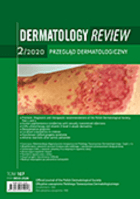
Przeglad Dermatologiczny
Connecting Researchers and Practitioners in Skin HealthPrzeglad Dermatologiczny is a peer-reviewed open-access journal published by TERMEDIA PUBLISHING HOUSE LTD, based in Poland. Since its establishment in 1951, this journal has been dedicated to advancing the field of dermatology by providing a platform for the dissemination of original research, reviews, and clinical case studies. With an e-ISSN of 2084-9893, it has gained recognition within the academic community, despite its current classification in the Q4 quartile of dermatological journals. The journal has been openly accessible since 2009, promoting wider dissemination of scientific knowledge, and is crucial for researchers, professionals, and students alike. While it holds a current rank of #105 out of 142 in the Scopus Dermatology category, the journal continually strives to enhance its impact through quality publications that address pressing dermatological issues. The diverse range of topics covered in the journal ensures it remains a vital resource for those looking to stay informed on the latest developments in dermatological research.
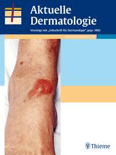
AKTUELLE DERMATOLOGIE
Bridging Gaps in Dermatological Education and ResearchAKTUELLE DERMATOLOGIE is a distinguished journal in the field of Dermatology, published by GEORG THIEME VERLAG KG in Germany. With a commitment to advancing knowledge and practice in dermatological science, the journal has regularly featured research articles, reviews, and case studies since its inception in 1975 and continues to publish contributions through 2024. Despite being categorized in the lower quartile (Q4) of dermatology journals and holding a Scopus rank of #127 out of 142, it plays a pivotal role in disseminating valuable insights that support ongoing education and research in the discipline. The journal provides an essential platform for both seasoned professionals and budding researchers to share their findings, explore emerging trends, and discuss clinical practices, all while serving the needs of an evolving medical landscape. Access to its content may be restricted, but the journal remains a crucial reference for those invested in the future of dermatological research and patient care.

CONTACT DERMATITIS
Exploring Innovations in Dermatological CareCONTACT DERMATITIS, published by WILEY, is a leading international journal focused on the vital field of dermatology, particularly examining the diagnosis, treatment, and management of contact dermatitis and related skin conditions. With origins dating back to 1975 and a planned convergence period extending to 2024, this esteemed journal serves as a crucial resource for researchers, clinicians, and healthcare professionals dedicated to advancing knowledge in dermatological practices. In the latest rankings, it has achieved a commendable Q2 classification in Dermatology and Q3 classification in Immunology and Allergy for 2023, underscoring its significance within these dynamic fields. Moreover, it holds a notable ranking of #29/142 in Medicine & Dermatology and #130/233 in Medicine & Immunology and Allergy according to Scopus metrics, placing it in the top tier of scholarly publications. While the journal operates on a subscription basis, its comprehensive reviews, original articles, and insightful research findings are invaluable for pushing the boundaries of current dermatological and immunological knowledge. By fostering a deeper understanding of the complexities of skin reactions and their implications, CONTACT DERMATITIS plays a vital role in connecting research with clinical practice, making it an essential read for anyone engaged in the field.

Dermatologic Therapy
Exploring the complexities of dermatology for better patient outcomes.Dermatologic Therapy is a leading peer-reviewed journal published by WILEY-HINDAWI that focuses on the multifaceted field of dermatology. Established in 1996 and continuing its profound impact into 2024, the journal has earned an impressive Q1 rating in Dermatology and ranks 11th out of 142 in the Scopus categorization, placing it in the 92nd percentile. With its headquarters in the United Kingdom, the journal's mission is to advance the understanding and treatment of skin diseases through the dissemination of high-quality research, reviews, and clinical information. Although not an open-access journal, it provides extensive access options to ensure that vital research reaches its audience. By leading scholarly discourse and innovation in dermatological treatments, Dermatologic Therapy serves as an essential resource for researchers, clinicians, and students dedicated to improving skin health worldwide.
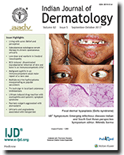
INDIAN JOURNAL OF DERMATOLOGY
Unveiling the science of skin for researchers and practitioners.INDIAN JOURNAL OF DERMATOLOGY, published by Wolters Kluwer Medknow Publications, is a renowned open-access journal that has been a significant platform for disseminating vital research in the field of dermatology since its inception in 1962. With an ISSN of 0019-5154 and an E-ISSN of 1998-3611, the journal covers a comprehensive array of topics relevant to skin health and diseases, serving both academic and clinical audiences in India and beyond. Having transitioned to an open access model in 2005, it strives to enhance the reach and impact of dermatological research. The journal is classified in the Q3 quartile within the dermatology category as of 2023 and ranks 82 out of 142 in Scopus, showcasing its contribution to the field despite competitive rankings. By fostering scholarly communication and providing a rigorous peer-review process, the INDIAN JOURNAL OF DERMATOLOGY remains a vital resource for researchers, practitioners, and students devoted to advancing the understanding and treatment of skin disorders.
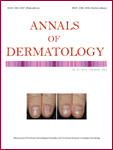
Annals of Dermatology
Elevating dermatology with impactful research.Annals of Dermatology is a prestigious academic journal published by the Korean Dermatological Association, focusing on the latest research and advancements in the field of dermatology. With a commitment to advancing knowledge in skin health and disease, this journal serves as a vital resource for researchers, clinicians, and students working in dermatology and related disciplines. Since its inception in 1989, it has evolved to consolidate its position in the academic community, boasting a Q2 ranking in the 2023 Dermatology category and a Scopus rank of #87 out of 142, placing it in the 39th percentile. Although it operates under a subscription model, the journal's impact factor reflects its significance in advancing dermatological research, attracting innovative studies and reviews that shape clinical practice. With a publication history extending from 1989 to 1996 and then from 2008 to the present, Annals of Dermatology continues to be an essential publication for those devoted to improving skin health.
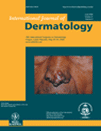
INTERNATIONAL JOURNAL OF DERMATOLOGY
Connecting researchers and practitioners in skin health.The INTERNATIONAL JOURNAL OF DERMATOLOGY, published by WILEY, stands as a premier scholarly platform in the field of dermatology, with a notable impact factor that affirms its quality and renown. Established in 1963 and converging through to 2024, this journal is recognized as a Q1 category publication, ranking in the top 20% of journals within the dermatology field according to the Scopus ranking system, where it occupies the 28th position among 142 journals. This reflects its dedication to advancing the understanding and treatment of skin diseases, making it a vital resource for researchers, healthcare professionals, and medical students alike. Although it does not provide open access options, articles published in this journal cover a broad range of dermatological topics, ensuring that it serves as a comprehensive and authoritative source for cutting-edge research and clinical practices. With its rigorous peer-review process and commitment to high standards, the INTERNATIONAL JOURNAL OF DERMATOLOGY remains indispensable for those engaged in dermatological science and practice.

Dermatology Reports
Bridging research and practice in dermatology.Dermatology Reports is a reputable open-access journal dedicated to advancing the field of dermatology through innovative research and clinical studies. Published by PAGEPRESS PUBL, this journal has been providing unrestricted access to valuable scientific content since 2009, promoting the dissemination of cutting-edge knowledge among researchers, professionals, and students alike. With an ISSN of 2036-7392 and an E-ISSN of 2036-7406, Dermatology Reports is indexed in Scopus, currently holding a rank of 93/142 in the Medicine - Dermatology category, placing it in the 34th percentile. The journal, based in Italy at MEDITGROUP, VIA G BELLI, 4, PAVIA 27100, aims to foster a multidisciplinary approach to dermatological research and practice, with a vision to converge various aspects of the field from 2010 to 2024 and beyond. With its Q3 quartile ranking in 2023, Dermatology Reports stands as a critical platform for highlighting novel findings and therapeutic strategies that shape the future of dermatological science.